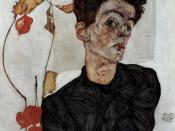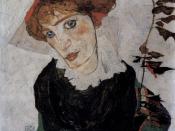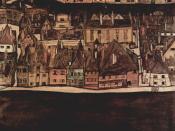Rohini Rudra
History of Modern and Post Modern Art
Due Date: February 13, 2014
Professor Grove
Expressionistic Portraits
"What about the reality of the everyday world and the reality of painting? They are not the same realities. What is the creative thing that you have struggled to get and where did it come from? What reference or value does it have, outside of painting itself?" Twentieth Century artists seemed to have been less interested in the classical hierarchy of genres and seemed to be more engrossed with how to represent reality in an age of uncertainty and war. Even though portraiture is traditionally associated with commissions from royal leaders, political figures or the bourgeoisie, it underwent a dramatic change in the modern era, perhaps most definitively in the hands of the Expressionists. Rather than flattering the sitter or focusing on external appearances, Expressionist portraits explore "inner fleeing" and issues of the psyche.
Provocatively exaggerated features, gestures, and expressions mark such highly distilled images.[1: Ad Reinhardt, in a group discussion at Studio 35, in 1950.][2: "The Art Story.org - Your Guide to Modern Art." Expressionism Movement, Artists and Major Works. N.p., n.d. Web. 11 Feb. 2014. <http://www.theartstory.org/movement-expressionism.htm>.]
Expressionist portraiture can be divided into two general categories: specific individuals (friends, lover, patrons) and generalized types. Prevalent in the second category are images of "exotic" personae as well as stylized heads. In other words, Expressionist artists, primarily working in Germany and Austria during the 1910s and 1920s and still reeling from the carnage of World War I, were less interested in accurately depicting their subject's facial features than in capturing their psychological state (Encyclopedia Britannica Online). They used formal devices such as distortion, non-realistic colors, and unusual settings to help to achieve this. [3: Expressionism: Encyclopedia Britannica Online]
Dr. Hans Prinzhorn...


